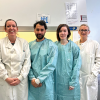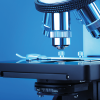Scientists claim that magnets could be used in the body to detect tumour cells that other diagnostic techniques might miss.

Researchers from Stanford University have created a magnetic wire that could be inserted into a person’s vein, where it could capture tumour cells that have been magnetised by special nanoparticles.
Current methods for isolating circulating tumour cells or nucleic acids present in a standard clinical sample of only
5-10ml of blood provide inadequate yields for early detection and comprehensive molecular profiling.
However, the researchers claim their flexible magnetic wire can retrieve rare biomarkers from the subject’s blood in vivo at a much higher yield.
The wire is inserted and removed through a standard intravenous catheter and captures biomarkers that have been previously labelled with injected magnetic particles.
In a proof-of-concept experiment in a live porcine model, the team demonstrated that the wire attracts up to 80 times more tumour cells than current blood-based cancer-detection methods.
The technique can also be used for other diseases in which there are cells or molecules of interest in the blood.
Image credit | iStock




